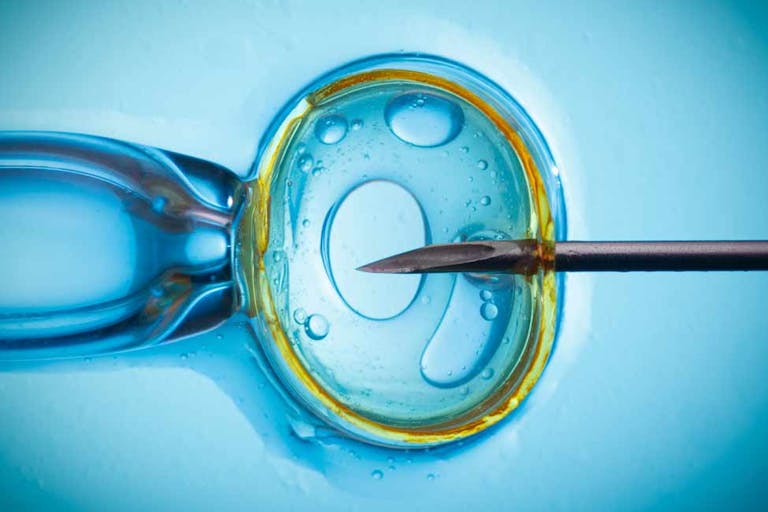
Abu Dhabi expands fertility industry to become 'IVF capital of the world'
Angeline Tan
·
Abortion Pill Reversal·By Cassy Cooke
Is ‘abortion pill reversal’ safe? Watch as one doctor explains the facts.
Chemical abortions, or abortions committed through the abortion pill regimen, are now the most common abortion method in the United States. As the abortion industry has furiously worked to promote abortion pills, something else has come under attack… a tool that may help women who change their minds.
Dr. Christina Francis, board-certified OB-GYN and CEO of the American Association of Pro-Life Obstetricians and Gynecologists, appears in a new video on the Colson’s Center’s “What Would You Say?” YouTube channel, explaining how abortion pill reversal works, and debunking some of the claims against it.

The mechanism of abortion pill reversal is essentially the same mechanism often used to prevent miscarriage… the hormone progesterone. Only in this case, it’s aimed at reversing the effects of the abortion pill regimen. If a woman decides after taking the first of the two drugs in the regimen (mifepristone) that she doesn’t want to go through with the abortion process, she may be able to try abortion pill reversal.
As Dr. Francis explains in the video:
Mifepristone blocks the hormone progesterone that ensures the flow of essential nutrients to the baby. Without it, the baby will starve and die. One to two days after taking mifepristone, the mom then takes misoprostol, which brings on contractions to expel the dead baby from the womb. The chemical abortion process can be reversed before misoprostol is taken, thanks to a commonly understood chemical process called Reversible Competitive Inhibition.
Mifepristone is an “inhibitor.” It blocks progesterone from being able to do its job. If the mom is given natural progesterone within 72 hours of taking mifepristone, the resulting increase in progesterone can overcome (or “outcompete”) the blockade, restoring to the preborn baby the vital nutrients he or she needs. This gives the baby a much higher chance of survival.
As noted, the use of progesterone is already widely accepted as a form of miscarriage prevention. And studies conducted by Dr. George Delgado, who pioneered the abortion pill reversal process, found low rates of complications.
According to Dr. Francis:
Natural progesterone has been used safely in early pregnancy for decades. According to the Charlotte Lozier Institute, “progesterone has been used to support healthy pregnancies since the 1950s.”
Natural progesterone is also commonly used for early pregnancy support in women with a history of recurrent pregnancy loss. That means healthier moms and babies! Dr. Delgado’s 2018 study also found that, for women who took progesterone to reverse their chemical abortions, the rates of preterm births and birth defects were either the same or lower than the rates of the general population. The preterm birth rate among APR babies was 2.7%, compared to the general population’s rate of 10%. The rate of birth defects among APR babies was also within the normal range at 2.7%.
Not only has natural progesterone been safely used in early pregnancy for decades—it has also been shown to make a positive impact on pregnancy outcomes in certain populations.
Article continues below
Dear Reader,
In 2026, Live Action is heading straight where the battle is fiercest: college campuses.
We have a bold initiative to establish 100 Live Action campus chapters within the next year, and your partnership will make it a success!
Your support today will help train and equip young leaders, bring Live Action’s educational content into academic environments, host on-campus events and debates, and empower students to challenge the pro-abortion status quo with truth and compassion.
Invest in pro-life grassroots outreach and cultural formation with your DOUBLED year-end gift!

Abortion advocates have claimed to create studies which showed that abortion pill reversal either didn’t work, or was massively dangerous.
Dr. Mitchell Creinin, an abortionist and a paid consultant for Danco, the leading U.S. producer of mifepristone, did a study of just 12 women and gave them all mifepristone; half were then put through the abortion pill reversal process. None were given misoprostol, the second pill in the chemical abortion process. Then two women dropped out of the study, leaving just five women in each group, and the study had to be cut short when three women suffered serious hemorrhaging. Abortion proponents therefore use this to claim that abortion pill reversal isn’t safe.
Not so fast, Dr. Francis explains:
The two women with the most severe health complications were in the group given mifepristone and the placebo. Their hemorrhaging required emergency surgery, and one even needed a blood transfusion.
The third woman who experienced heavy bleeding was in the mifepristone-plus-progesterone group but when she arrived at the hospital, she was found to have already completed her chemical abortion. Her bleeding stopped on its own.
So, contrary to what pro-abortion groups often claim, the safety concerns exposed by this study are tied to mifepristone use, not to progesterone.
In fact, Dr. Creinin’s study showed the effectiveness of progesterone. In the group of women who took progesterone, four out of five still had living babies two weeks after treatment. This was double the 40% survival rate of the babies in the mifepristone-only group.
Abortion pill reversal is still relatively new… but it’s been credited with already saving many, many lives.
“According to the Abortion Pill Reversal Network, over 4,000 babies have been saved through abortion pill reversal. Those moms and dads are now able to hold their babies in their arms and look forward to watching them grow up,” Francis explained. “Even doctors who are pro-choice should support providing information about abortion pill reversal to women who regret their choice to abort their baby. The 4,000-plus women who have used abortion pill reversal are proof that that regret is real — but it doesn’t have to be the last word if they can access this lifesaving treatment in time.”
Live Action News is pro-life news and commentary from a pro-life perspective.
Contact editor@liveaction.org for questions, corrections, or if you are seeking permission to reprint any Live Action News content.
Guest Articles: To submit a guest article to Live Action News, email editor@liveaction.org with an attached Word document of 800-1000 words. Please also attach any photos relevant to your submission if applicable. If your submission is accepted for publication, you will be notified within three weeks. Guest articles are not compensated (see our Open License Agreement). Thank you for your interest in Live Action News!

Angeline Tan
·
Guest Column
Liberty Counsel
·
Abortion Pill
Isabella Childs
·
Guest Column
Lisa Bourne
·
Abortion Pill Reversal
Nancy Flanders
·
Abortion Pill
Carole Novielli
·
Politics
Cassy Cooke
·
Politics
Cassy Cooke
·
Pop Culture
Cassy Cooke
·
International
Cassy Cooke
·
Analysis
Cassy Cooke
·